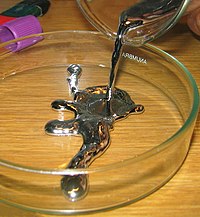
Photo from wikipedia
CT-guided percutaneous transthoracic lung needle biopsy (PLB) is an effective procedure for obtaining cyto-histological diagnoses of peripheral lesions. However, upper postero-lateral lung nodules (UPLN) may be difficult to reach using… Click to show full abstract
CT-guided percutaneous transthoracic lung needle biopsy (PLB) is an effective procedure for obtaining cyto-histological diagnoses of peripheral lesions. However, upper postero-lateral lung nodules (UPLN) may be difficult to reach using a standard intercostal either anterior or lateral approach or when the nodule is just behind a rib or scapula. We evaluated the feasibility and effectiveness of trans-scapular approach (tPLB) in these patients using large-core needles. We retrospectively collected the data of 11 consecutive patients (mean age 74.6 years, SD 5.9) among those scheduled to undergo CT-guided PLB over the period February 2015 to February 2017. In these patients, the presence of a UPLN required a tPLB using a co-axial technique and large full-core needles (15G for the scapular piercing and 18–19G for tissue sampling). All patients were assessed by telephone at 24 h, 78 h and at an office visit at 30 days after the procedure to evaluate post-procedural pain (VAS score) and shoulder mobility. Ten of the eleven samples were diagnostic. No major complications were encountered. Three patients developed a pneumothorax, but none required pleural drainage. All the patients confirmed the absence of pain at 24–72 h and 30 days, reporting a VAS score less than 1, without any shoulder mobility limitation. tPLB seems to be an effective and feasible procedure, accompanied by a low risk of pneumothorax in UPLN cases.
Journal Title: CardioVascular and Interventional Radiology
Year Published: 2017
Link to full text (if available)
Share on Social Media: Sign Up to like & get
recommendations!